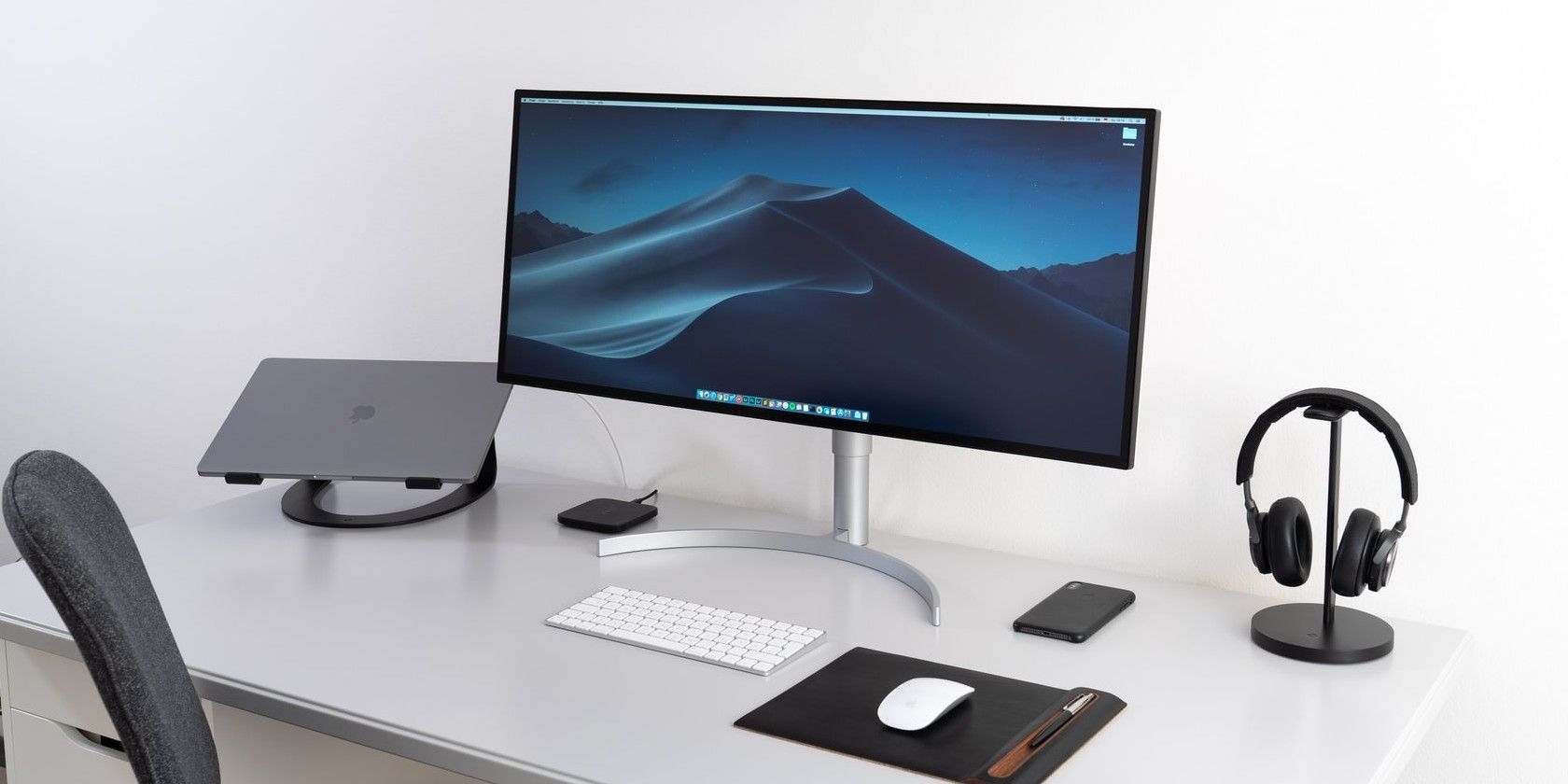
Review of Rivian's Innovative R1T: An Electrifying Off-Road Experience

Review of Rivian’s Innovative R1T: An Electrifying Off-Road Experience
Quick Links
- The Nuts and Bolts of the Rivian R1T
- The Electric Driving Modes of Rivian R1T
- Hauling With the Rivian R1T
- Connectivity and Controlling Rivian R1T With Its App
- The Infotainment of It All
- The Rivian R1T is Lacking a Few Items (and Has Bugs)
- Rivian R1T Charging and the Electric Grid
- Should You Buy the Rivian R1T?
Key Takeaways
- Rivian R1T offers a solid electric range, excellent power, and clever functional details for an exciting driving experience.
- The R1T’s driving modes allow for different terrain coverage and range efficiency, but some modes may be wasted for non-truck users.
- The Rivian R1T provides plenty of utility features and convenience, but there are some software limitations.
Electric vehicles continue to flood the market, giving consumers who are interested in a cleaner drive more options. The most compelling choices aren’t from incumbent manufacturers, however. Rivian’s R1T (and R1S) blends familiar utility with advanced technology for an incredibly exciting drive.
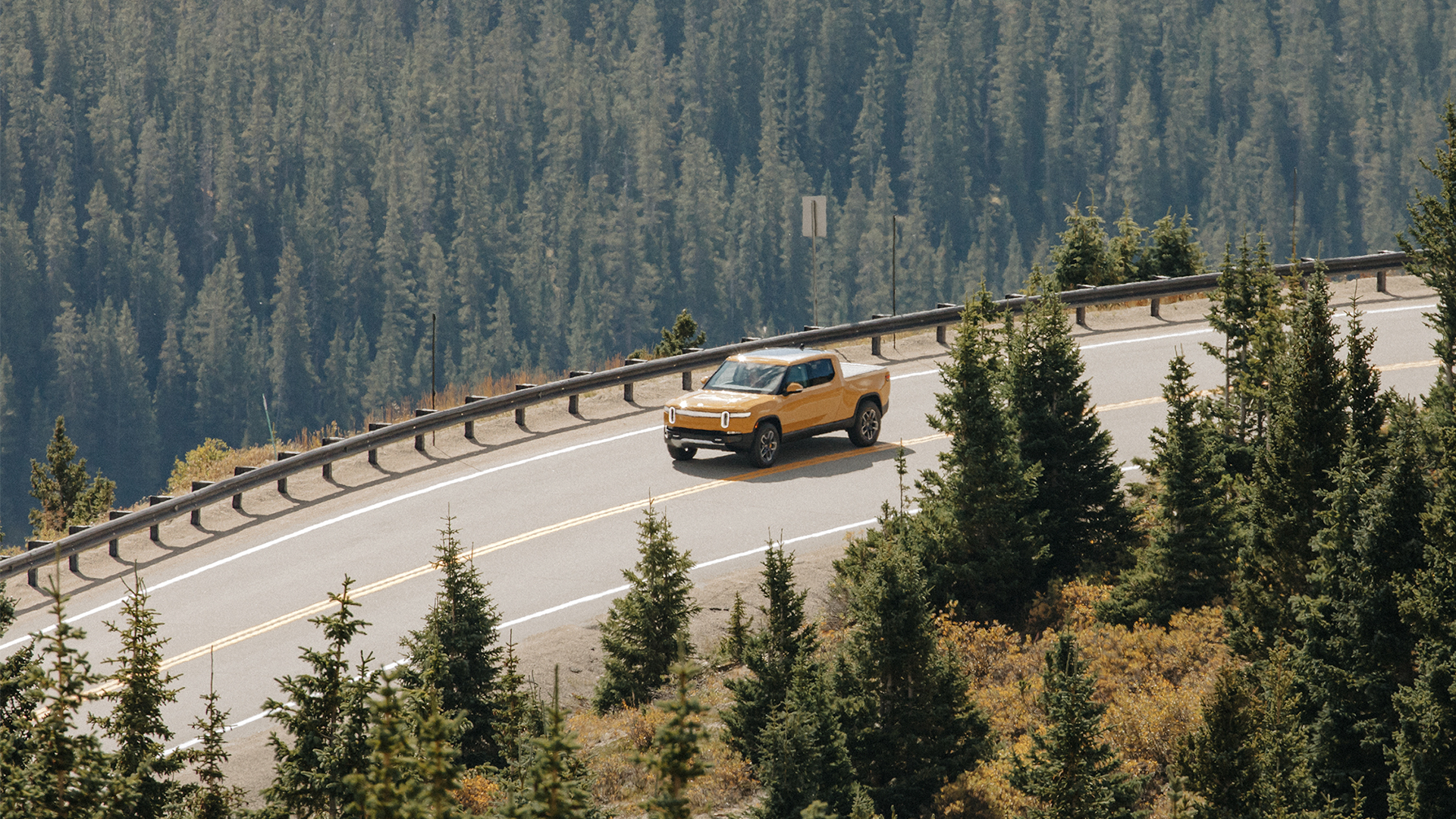

Rivian R1T
8/ 10
Starting price
$73,000; Tested model price: $89,500
Vehicle dimensions
6.5 x 18.1 x 6.8ft (1.98 x 5.5 x 2.1m)
Storage
Front trunk 11.1 cu ft; Gear tunnel 11.7 cu ft; Total 62 cu ft
Bed size
Tailgate up 51.1 x 54.1in; Tailgate down 83.9in
Ground clearance
Up to 14.9in
Towing capacity
11,000 lbs
Electric range
320 miles (Tested model)
Warranty
5 years/60,000 miles; battery and drivetrain 8 years/175,000 miles
Pros
- Solid range
- Excellent power
- Plenty of clever functional details around the vehicle
Cons
- May be limited by public chargers in certain areas
- A few software limitations and lacking features (could be added in the future)
Expand
The Nuts and Bolts of the Rivian R1T
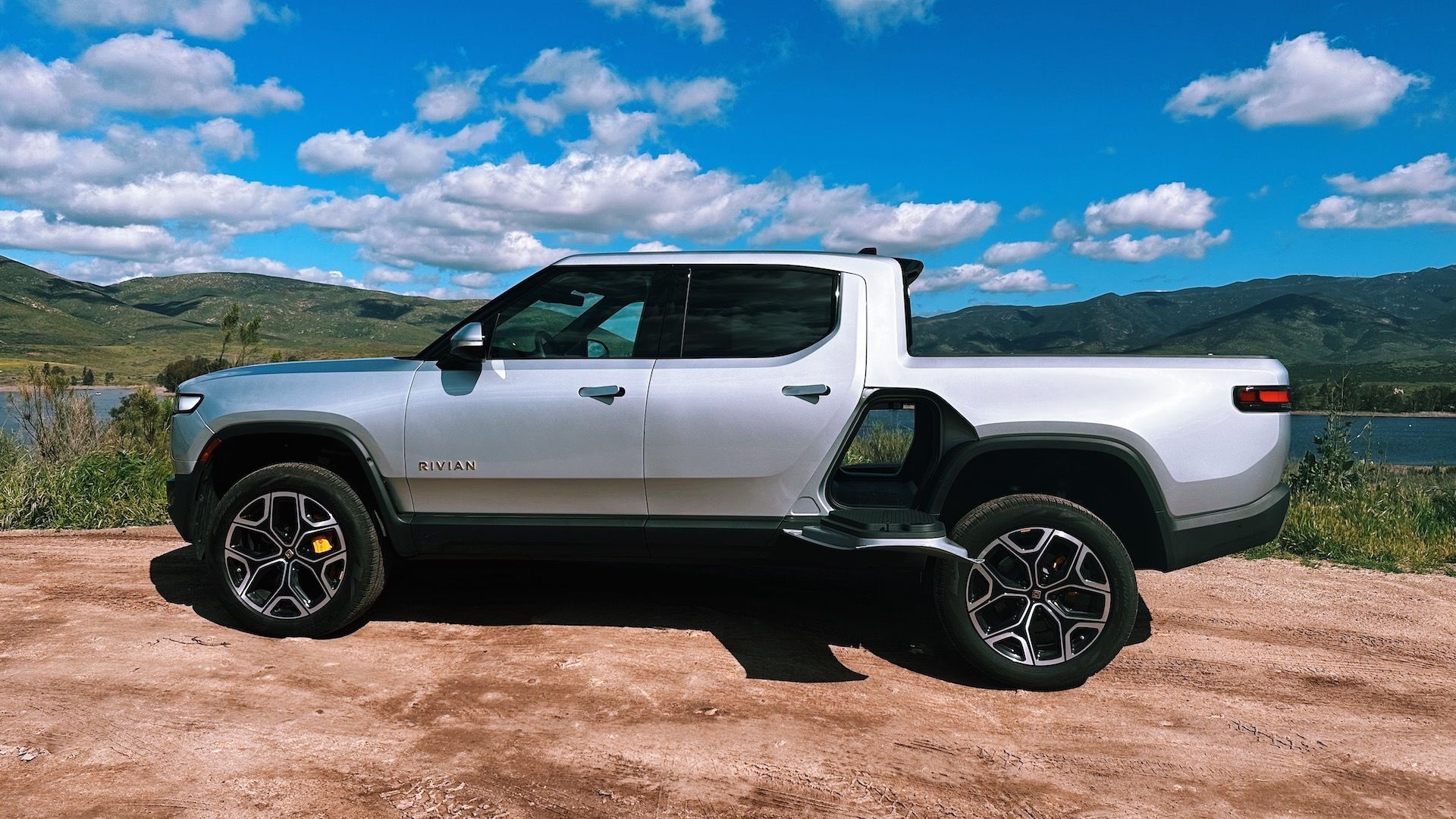
Tyler Hayes / Review Geek
I’ve driven a Tesla Model 3 and Model Y since 2018. My household has been EV-only since 2019. While I haven’t driven all the electric vehicles on the market, I am intimately familiar with the most popular models on the road today. Coming into this extended, week-long test drive, I was most interested in how Rivian compares to Tesla—by far the current EV maker to beat.
Jumping right to the conclusion, it was exciting to see how electric drive trains are enabling vehicles like Rivian and Tesla. They are much more similar than they are different, and I believe both are better driving experiences than gasoline vehicles. But really, the foot to the accelerator driving part of the R1T felt instantly familiar to me.
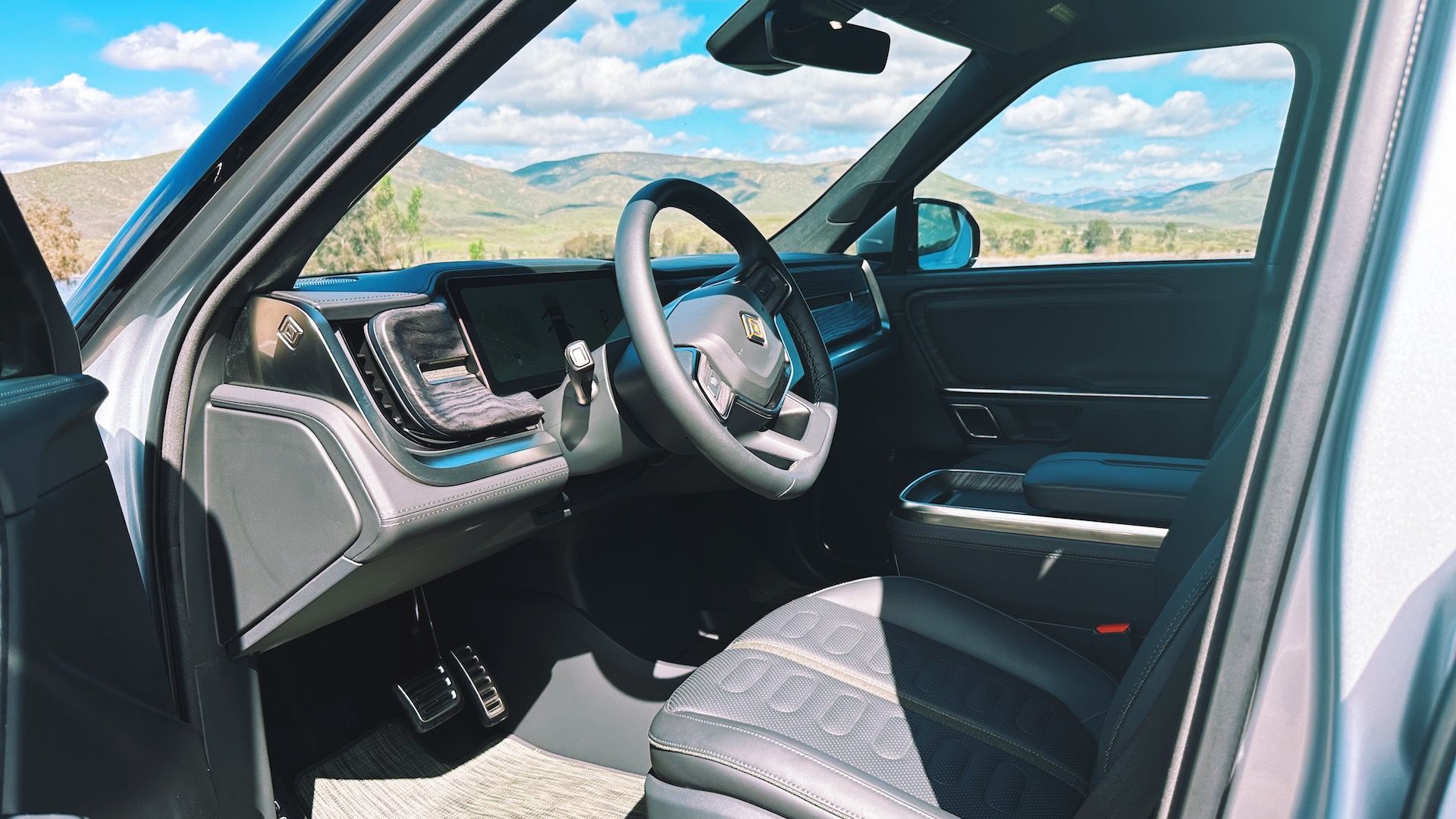
Front seat interior - Tyler Hayes / Review Geek
Transitioning from a Model Y to an R1T was seamless. Buttons on the steering wheel did the same things in each vehicle. The stalks performed similar functionality. The software was very different at a visual level, but there were common themes across both that weren’t far removed from each other.
Of course, Tesla has largely focused on the sedan and smaller SUV market while Rivian has been free to tackle the truck and larger SUV market. The good news is that if you like driving a truck, Rivian has that option thoroughly covered. It’s a substantial vehicle that can lower itself down to 9.5 inches of ground clearance up to nearly 15 inches of height.
Related: 8 Amazing Rivian R1T Electric Truck Features
In the end, the Rivian R1T did enough to differentiate itself, providing plenty of utility features without feeling foreign to the driver who likes what a truck can do.
The R1T has a lot of the conveniences an $80,000 vehicle should have, including heated and cooled front seats and heated rear seats with a temperature control screen. There was a portable Bluetooth speaker hidden in the front console area. A hidden flashlight resides in the door frame. The roof is panoramic glass. All these things were nice, but for the cost of the vehicle, all of them felt necessary.
The Electric Driving Modes of Rivian R1T
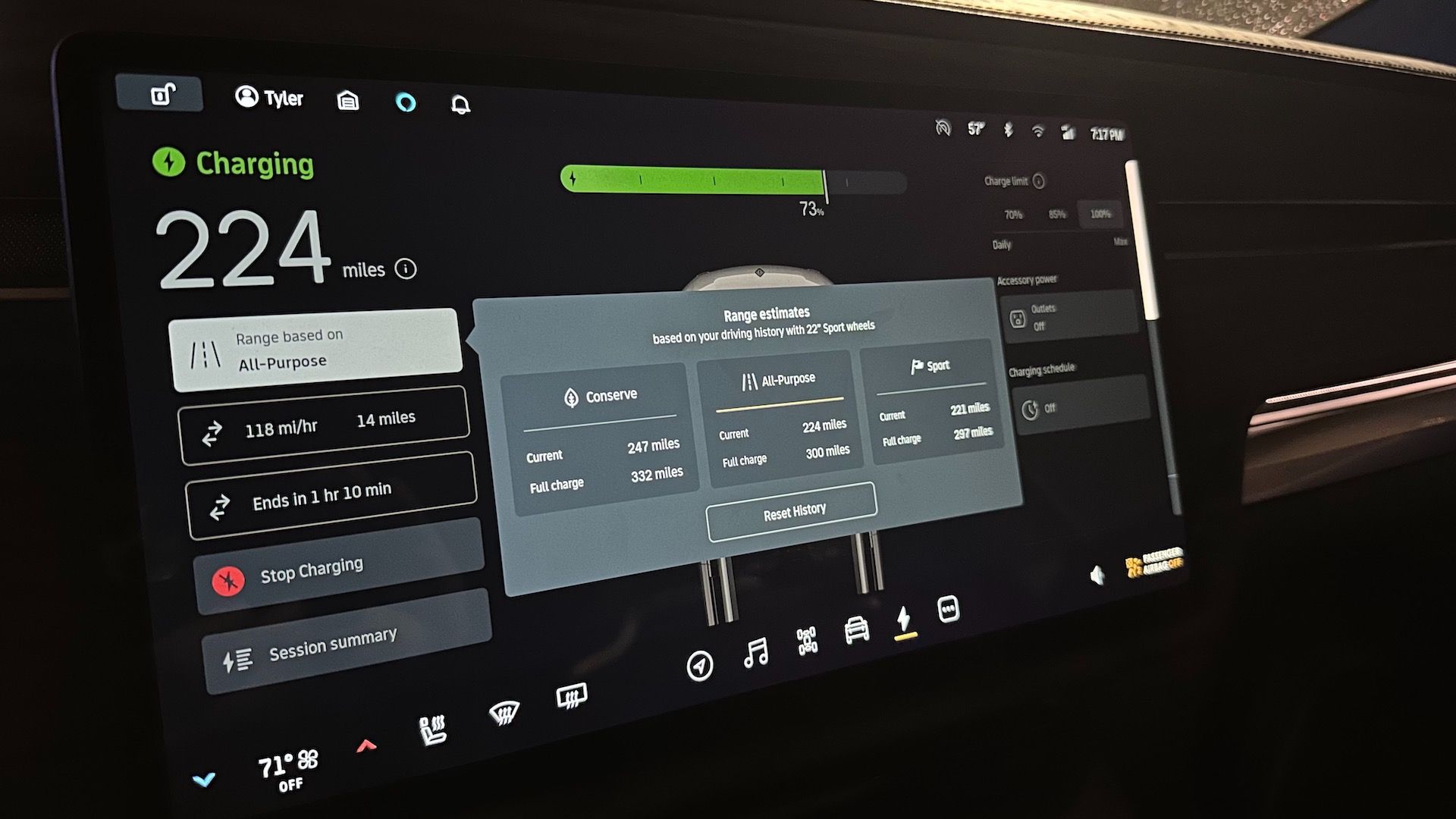
Tyler Hayes / Review Geek
Raising and lowering the height of the R1T with its quad-motors was a novelty from the first day I picked up the truck until I dropped it off. The feature enables more range efficiency on the highway at a lower height and more terrain coverage off the road when raised. Even on stable ground, the height adjustment allows the truck to level itself over the course of a couple of minutes.
These height adjustments are available in different driving modes, both manually selectable and able to be set automatically. I instantly understood why there were different driving modes, but knowing when to select different ones took a few days of fiddling to figure out. The modes include:
- All Conditions
- Sport
- Conserve
- Off Road
- Snow
- Towing
If you aren’t utilizing the Rivian R1T as a truck to tow and aren’t going off-road semi-regularly, a lot of the driving modes might feel wasted. I found Conserve and Sport to be the two modes I was switching between after a few days. Either you want as much range as possible, or you want to go as fast as possible.
The R1T model can get between 240 and 400 miles of range, depending on the capacity of the battery purchased. The model I tested had a range of just over 300 miles. I never drove a consecutive 300 miles, but it did seem pretty accurate. I also didn’t notice much battery drain when the truck wasn’t in use.
It’s common for an electric vehicle to lose a few miles of range overnight or for tasks besides driving. I noticed less of that happening with the R1T than with a Model Y, but it’s hard to tell in only a week. This is something more suitable for judging over the course of months, across different seasons and temperatures. Overnight, the truck sat in temperatures in the low 40s and was driven in the high 60s during the day.
The truck is capable of self-leveling thanks to its quad-motor configuration. If you look closely at the second photo at the top of this review, you might notice a little difference in the truck’s height over the wheel well in the front and back. This was a time it was leveled for the berm it was on. The process took about three minutes. I found out you can drive the truck as it unlevels itself, but only with a top speed of around 10 miles per hour. Getting itself ready to drive took about a minute.
Hauling With the Rivian R1T
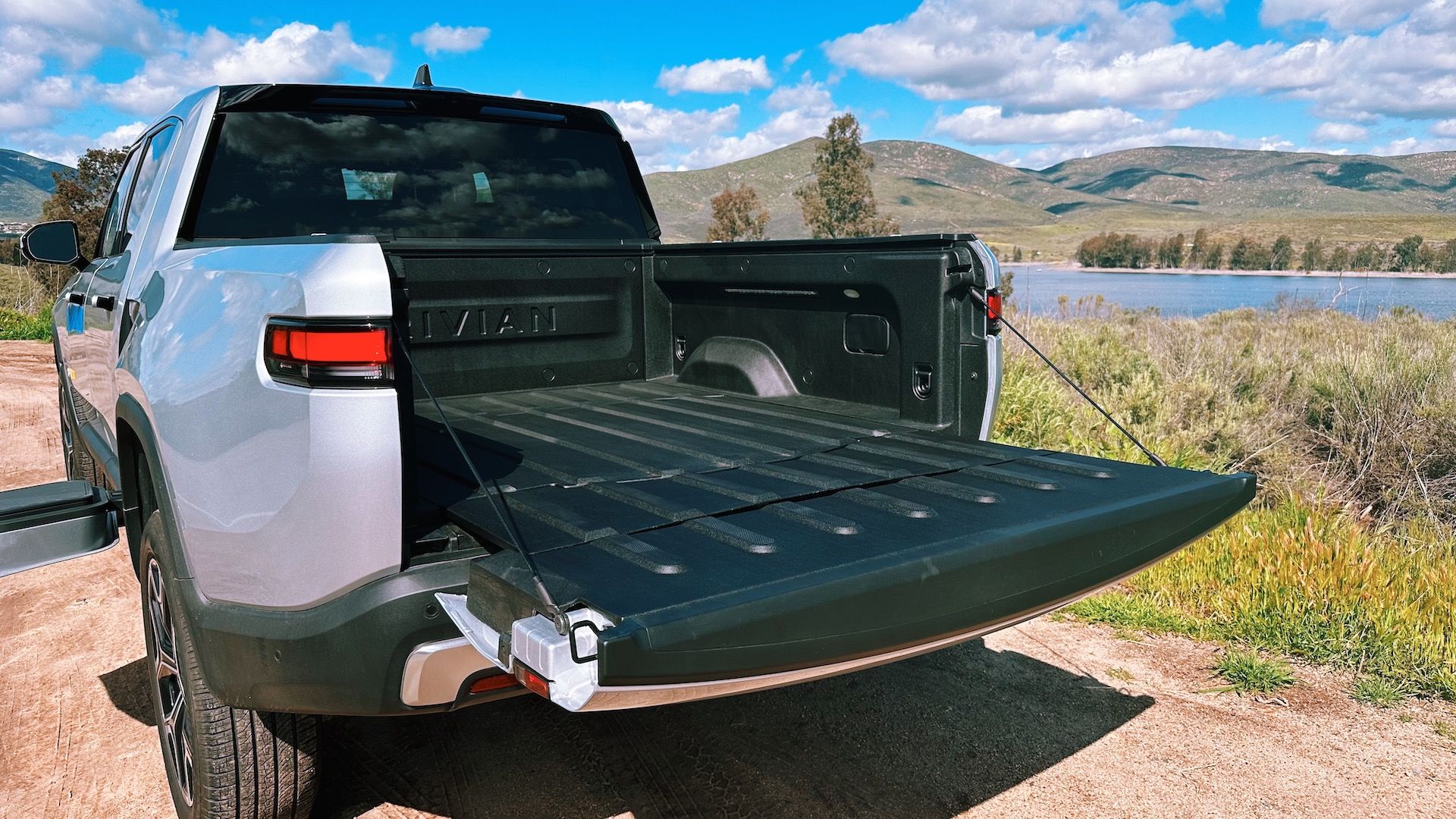
Tyler Hayes / Review Geek
Even if you’re not interested in using the Rivian R1T to its full capability as a truck, there’s a good chance you’ll still be asked to help friends move at some point. To put it through some easy, basic tests, I moved some electric bikes, as well as some furniture, at different times.
The truck bed is about 4.25 feet wide and 4.5 feet long, with the tailgate shut. The model I tested didn’t have a Tonneau cover built-in, but all the trucks have the railing system for it to be able to add it later.
Related: How Much Weight Can an Electric Truck Tow?
I loaded the bed with several e-bikes, fittingly, to carry around a couple of hundred pounds of cargo in the bed. Plus, the e-bikes made use of the outlets in the bed to charge and the built-in air compressor to fill tires. It was a trifecta of utility. A rainy Southern California didn’t afford the complete truck experience, but the R1T handled that task without breaking a sweat.
Close
What a rainy week did afford was the reliance on the gear tunnel. My favorite use of it was for my electric bass guitar, which wouldn’t have fit in the front trunk and took up too much room on the back seats. The gear tunnel was the perfect spot for it, however. It didn’t slide back and forth and was easy enough to get in and out.
Personally, the R1S , Rivian’s SUV, would fit my family’s needs better with a third row of seating, but the gear tunnel on the R1T is so cool, unique, and handy that I can understand how that feature alone could sway people from one Rivian model to the other.
It wasn’t just the tunnel itself; it was the usefulness of the tunnel doors to be used as a step or seat that was compelling too.
Connectivity and Controlling Rivian R1T With Its App
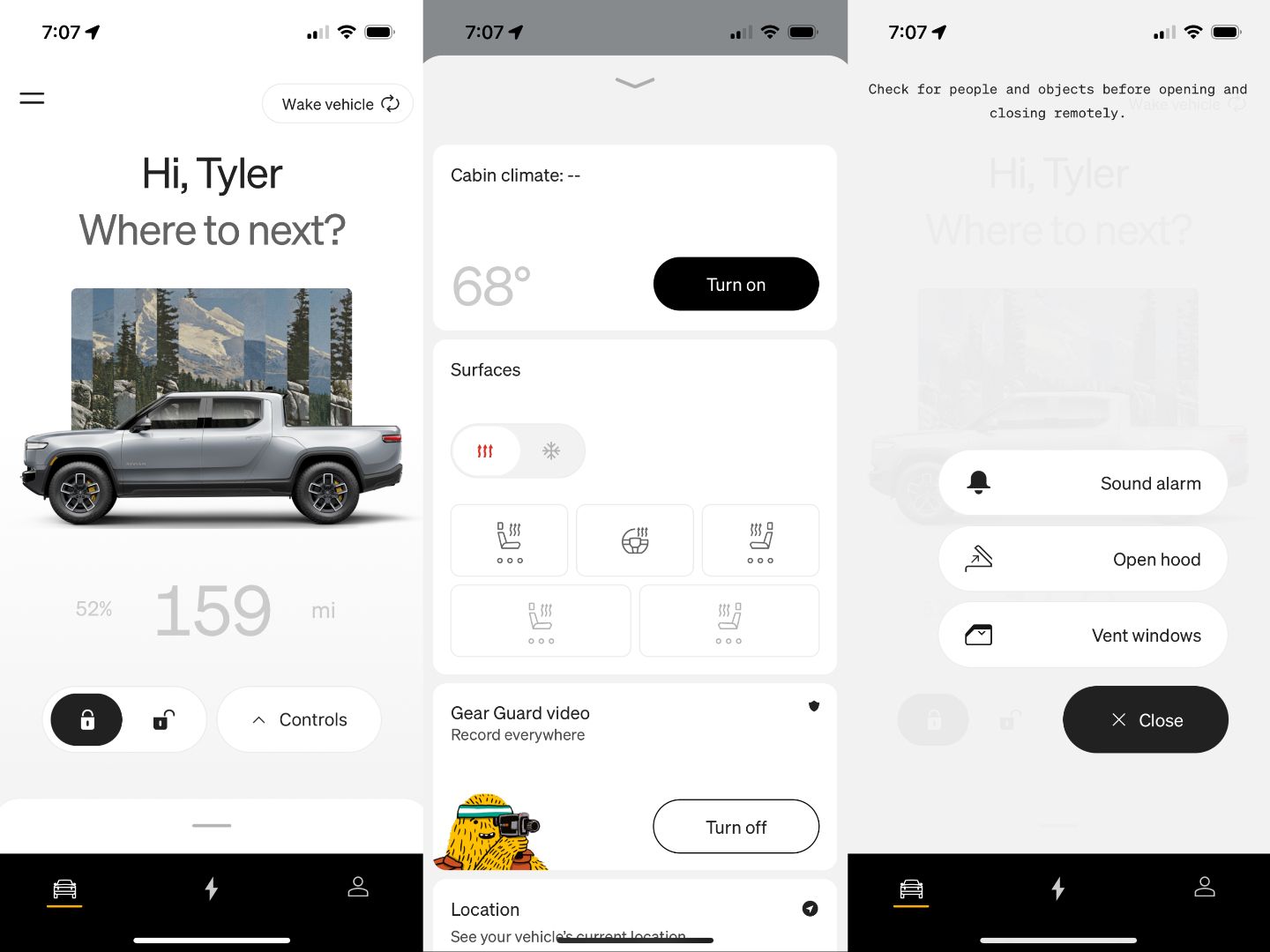
Rivian’s mobile app (L to R) main screen, swipe up menu, controls buttons - Tyler Hayes / Review Geek
One of the most important areas of an electric vehicle is its center console and technology hub. Electric vehicles are always powered on, which enables a driver to have constant communication with their car, even when they’re away from them.
That makes the Rivian mobile app (available for iPhone and Android ) an integral part of the ownership experience. If you are coming from a vehicle without a companion app to suddenly relying on it for all kinds of controls, the Rivian app provides a good first experience. The app was responsive, it had an obvious and easy-to-manipulate interface. It also had most of the functionality I was looking for crammed inside.
Coming from nearly five years of Tesla ownership, I wasn’t foreign to the idea of using an app to adjust my car. The two automakers take radically different approaches to app design, but in terms of functionality, Rivian’s app felt familiar to me after only a day.
I would have liked to see more quick controls right on the main screen after opening the app, beyond lock and unlock. I also would have liked to see more customization to move icons and settings to the first screen in the app. As it stood, I needed to swipe or tap at least once to really do anything after opening the app.
The middle lighting bolt icon in the app showed charging stations, but most of the app’s functionality resided in the first tab.
The Infotainment of It All
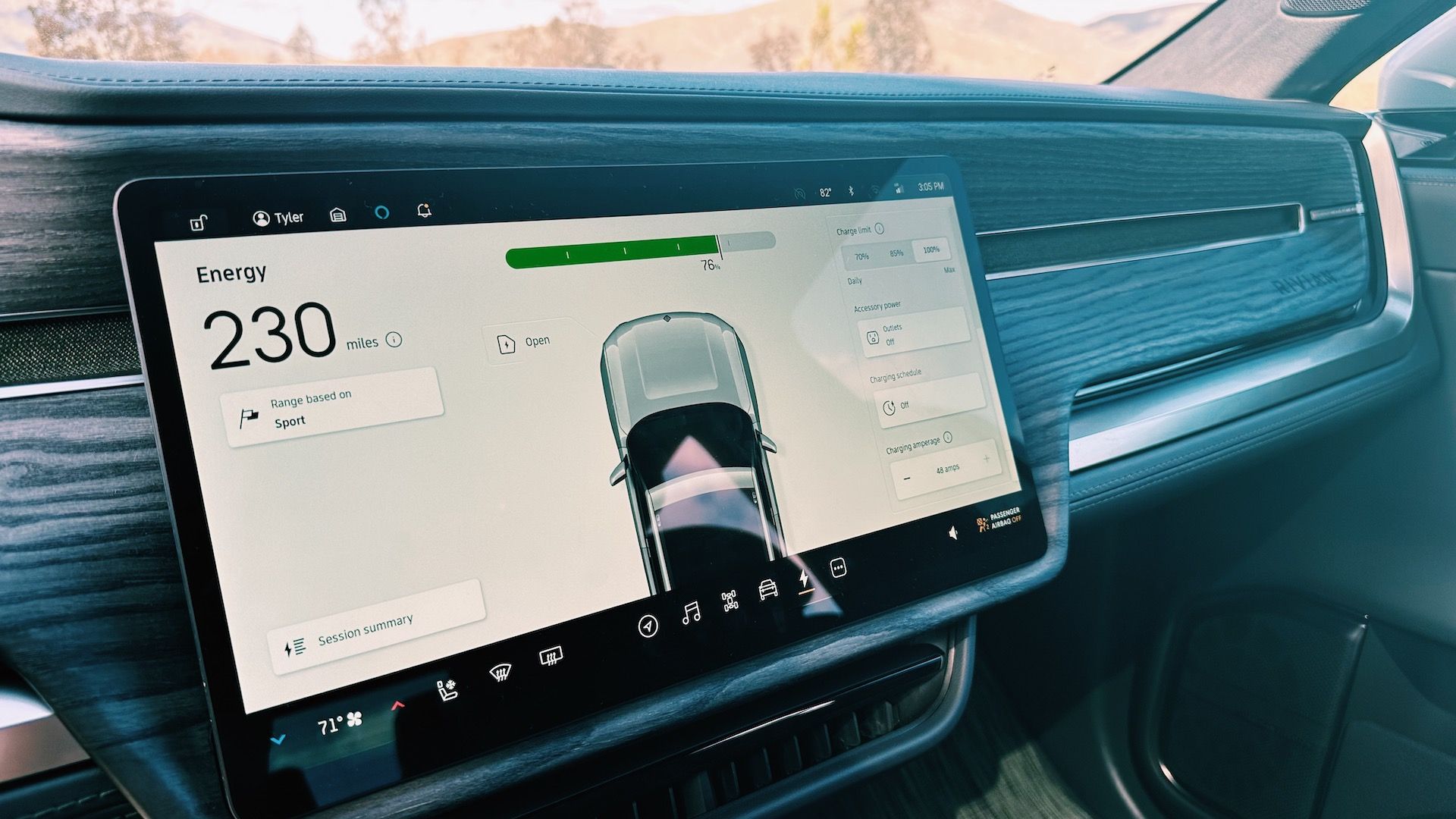
The different functions of the software reside along the bottom of the screen. - Tyler Hayes / Review Geek
While the mobile app plays a large role for an electric vehicle when you’re away from it, the infotainment screen plays a large role while you’re driving the automobile.
The main infotainment screen worked by selecting an area along the bottom, such as navigation or music, and then adjusting items in that area on the left side of the screen from top to bottom. It was easy to become familiar with once all the areas of the software were assessed. In a Tesla, all the settings are grouped together, including mirror and steering wheel adjustments. In the Rivian, those are separated into locks, lights, mirrors, and other commonly used features, while the settings section was more for the finer details of how some of those features behaved.
Related: Why Is Tesla So Interested In Gaming?
The entertainment area lacked any visual apps. There were no games , no Netflix app, and no other way to watch video on the huge 15-inch display. I don’t use those features a ton, but my daughter does use them on a regular basis waiting at baseball practices and sporadically across different waiting occasions (such as when the vehicle is charging).
There are no technical reasons that some of these features are not available. It’s either due to company philosophy or that it was not a priority at launch, which is perfectly acceptable. It was nice to be able to log into Spotify or Tidal, but Apple Music would have been great too.
Having two screens, one main one and a second one in front of the driver for the speed, directions, and Driver+ visuals was nice. After not having an instrument cluster directly in front of me for the last five years, I didn’t breathe a sigh of relief to have it back. It felt a little unnecessary because the main 15-inch screen always pulled my attention toward it anyway.
Related: What to Know About Over-the-Air Updates for Cars
Parking in the R1T was made easier thanks to a birds-eye view of the truck’s surroundings on the main screen. This isn’t unique to Rivian, but it did come in handy. Unfortunately, the rear and side cameras didn’t seem as sharp as the ones on the Model Y. There was also a lot more warping to make the view as wide as possible.
The Rivian R1T has 11 total cameras, 5 radars, and 12 ultrasonic sensors on it. The driver currently only has access to four of those on the screen for parking, however. That was disappointing.
While the infotainment area felt lacking on the R1T in March 2023, my guess is that it won’t remain that way forever. Everything on the screen can be changed at a moment’s notice. The key for Rivian will be making sure it continues to enhance the driving experience without alienating current drivers with radical redesigns. In this case, allowing people to permanently see or pin more areas along the bottom of the screen seems necessary. I wanted to have access to the camera icon at all times, for example, but it wasn’t possible.
The Rivian R1T is Lacking a Few Items (and Has Bugs)
I did experience a few software bugs during my week-long test of the R1T. The most noticeable was streaming music from my phone over Bluetooth. Most times, when entering the vehicle, the audio was crackly, regardless of my phone’s cellular or Wi-Fi connection. The artwork for songs also stopped displaying the correct one after a few days. Listening to Death Cab For Cutie would show artwork for a different song of a different band. Sometimes, there would be three different artworks displayed if I was on the music view of the main screen.
Tesla provides a live view of the car’s cameras through their mobile app. I missed that feature while using the Rivian, occasionally wondering if it was safe where I parked it. Tesla also recently added a ‘chime on green light’ feature that alerts you when the stoplight has changed from red to green.
Related: 5 Biggest Problems with EVs
Similarly, the Gear Gaurd uses the truck’s camera’s to monitor the bed and all around the truck while you’re away. It can record videos and save them for later viewing. Unfortunately, there is no dashcam functionality while you’re driving. This seems like an oversight or, hopefully, a forthcoming feature. I can honk the horn on my Model Y to trigger it to save a video while driving, and it’s come in handy more than once.
These are minor things, including the Bluetooth issues, but it did show that, even though Rivian looks to be mostly caught up with Tesla, the company is still playing catch up. It might be a concern now, but at the current pace, my guess is that Rivian will get close to parity within the next three years.
This brings me to the area where Rivian and all other EVs fall behind Tesla—ubiquitous charging options.
Rivian R1T Charging and the Electric Grid
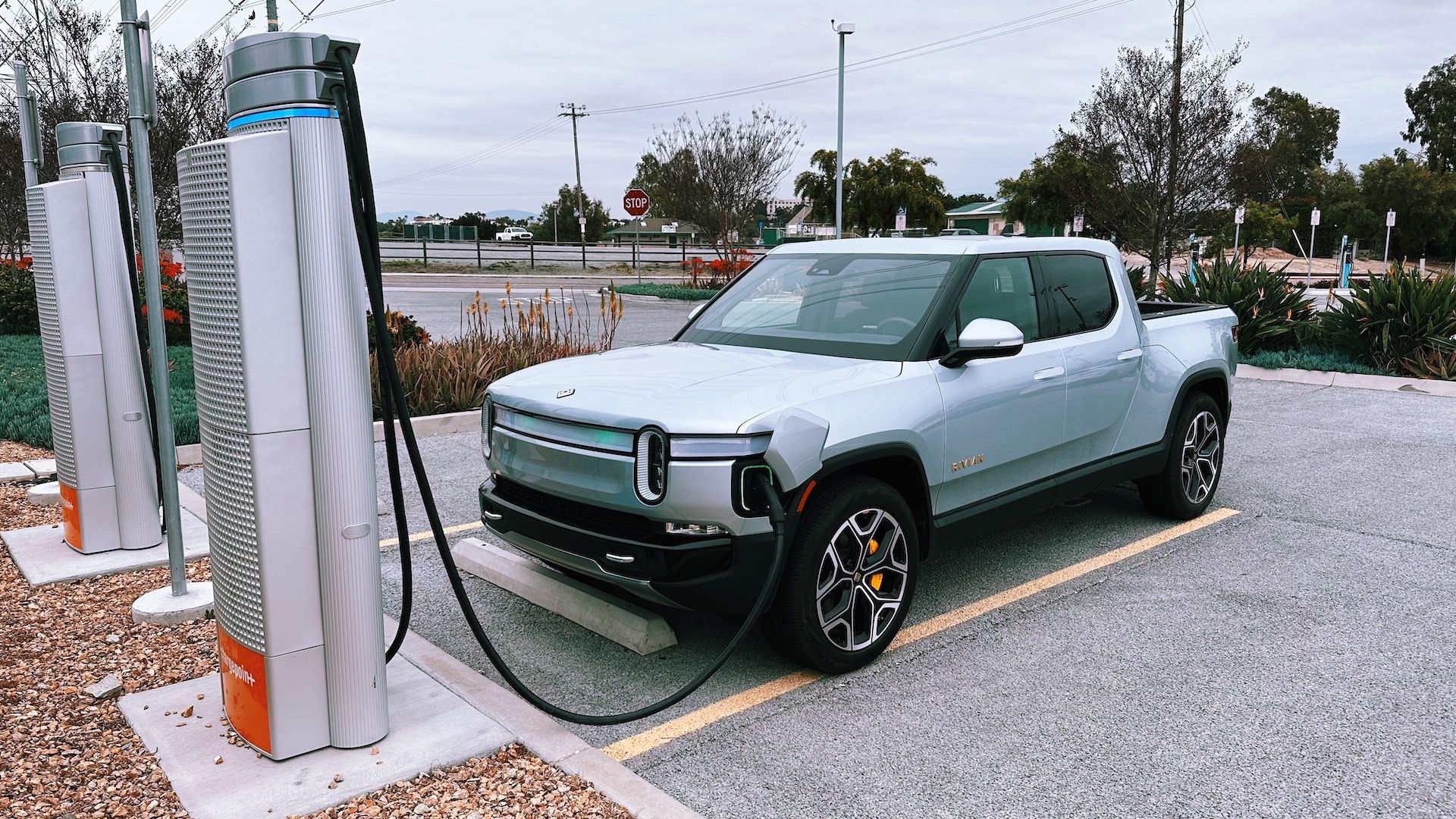
Tyler Hayes / Review Geek
Charging the R1T was the worse part of using the vehicle. Charging the truck at home is the best option and would have eliminated some of my stress, but due to a few factors, I had to rely on public charging stations.
For one, the Rivian R1T was too big to park and charge in my garage. The Model Y fits fine, but the R1T is just big enough to make it a little problematic in a two-car suburban garage. I would need an exterior home charger—which is possible, but potentially annoying. Additionally, I was curious to see how general charging stations functioned, compared to Telsa’s supercharger stations.
Related: What Happens When an Electric Vehicle Battery Dies?
Within 10-15 miles of my house, I only had three Level 3 CCS fast chargers available. The chargers provided up to 150kW of power or about 150 miles of range per hour . In reality, I saw power delivered closer to 110-130 miles of range per hour. I thought that was acceptable, but could be better. Tesla superchargers can deliver up to 300+ miles per hour.
In comparison to the three CCS chargers near me, I have 31 superchargers less than a mile from my house and even more within 15 miles. The Tesla supercharger network was a selling factor for me back in 2018, and still, in 2023, it would play a factor in buying an electric vehicle. There were plenty of slow chargers near me, but those only gave about 11-15 miles of range per hour. I wouldn’t not buy a Rivian only because of limited charging, but it is a consideration.
Thankfully, Tesla is slowly opening up its Superchargers to other EV manufacturers .
Should You Buy the Rivian R1T?
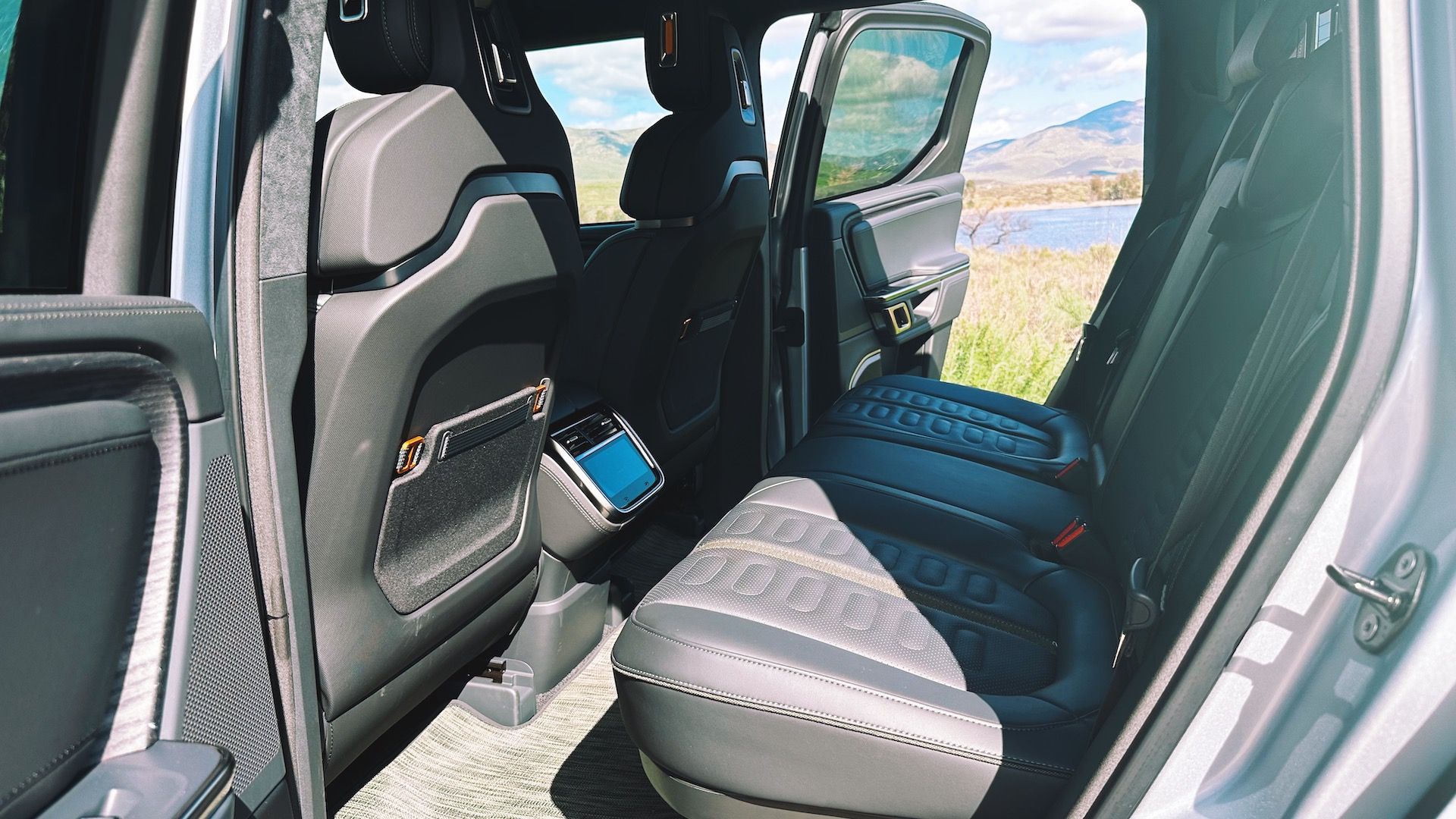
Backseat interior - Tyler Hayes / Review Geek
If you’re sold on the Rivian R1T or even the R1S, you should reserve one now. The current estimate as of March 2023 is that new vehicles will be available to people on the waitlist in 2024.
The recurring theme of the R1T that I noticed was that it was good but could be better. More public charging stations are being built now and will be ready in the future. The software inside the car and the mobile app will be more polished and have more functionality.
It might be a slight benefit to potential owners that vehicles aren’t readily available until 2024. Anything that can’t be changed was solid and worked well—except I could have used more than four cup holders in the entire truck. It was the software that I kept running into limitations with, but those are the things that can change and evolve over time to make today’s purchase even better. And really, that’s the promise of connected, electric vehicles.


Rivian R1T
8/ 10
Also read:
- [New] 2024 Approved Discover 5 Premier Mac Livestream Tools
- [New] Essential Tips for Overwatch Game Sound Logging
- [New] In 2024, Leading Talents Premier Instragram HLV Creators
- [New] Ultimate SFPR Levels in Slow-Motion Content for 2024
- Comprehensive Freemake Video Converter Analysis: The Leading Solution in Unmatched Video Editing Capabilities
- Effective Solutions for Resolving MacOS Ventura and Monterey Update Problems
- Essential Ranking: The Ultimate Collection of Timeless & Classic Animated Movies on DVD
- In 2024, The Ultimate Guide to Tecno Spark 20 Pro+ Pattern Lock Screen Everything You Need to Know
- Quick Guide to Converting ISO Files Into Movies (MOV) on Your Apple Computer
- Resolved: Fixes Blackout Problem in OBS Game Recording
- The Easy Way to Snap Spectacular Slow Mo on Android
- Understanding 4K Upscaling: Techniques to Enhance Low-Res Videos
- Updated Beyond Free Photos Understanding Pexels.coms Role in Creative Projects
- Как Визуально И Просто Превратить Ваш Клонированный Диск В Загрузочное Устройство Для Windows 11/10: Пошаговое Руководство [5 Способов]
- Title: Review of Rivian's Innovative R1T: An Electrifying Off-Road Experience
- Author: Edward
- Created at : 2025-01-23 21:48:15
- Updated at : 2025-01-31 13:07:59
- Link: https://vp-tips.techidaily.com/review-of-rivians-innovative-r1t-an-electrifying-off-road-experience/
- License: This work is licensed under CC BY-NC-SA 4.0.